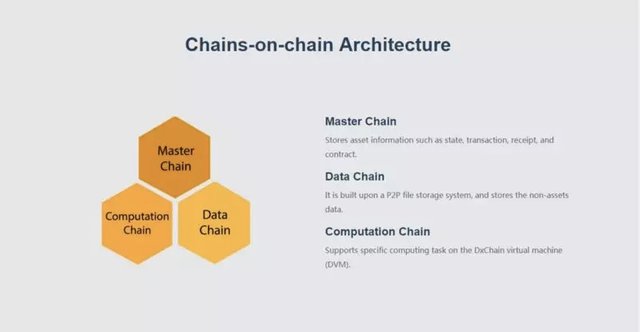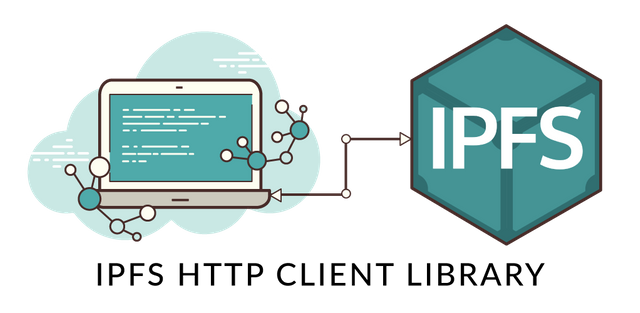Q1: Today, there are more and more public chain projects. So why did DxChain choose to develop infrastructure blockchains?
A: We believe blockchain has bottlenecks today. Even Bitcoin and Ethereum, the two most successful blockchain applications, are not providing storage services or computing resources. Technical bottlenecks are preventing these projects from reaching its full potential in industries except for money transfer and information tracking of logistics.
The blockchain world is lack of a real and effective fundamental infrastructure. Therefore, many startups and projects tend to commit to public chains.
In our opinion, there are three main types of public chain projects:
The first kind is to optimize throughput and latency. One of the most significant challenges for Bitcoin and Ethereum is low throughput and high latency. People want to solve the problems, aimed at ramping up the transaction per second and lowering the latency. Most projects, such as Raiden Network and Lightning Network, are dedicated to optimization for Ethereum and Bitcoin.
However, DxChain believes that an increase of TPS only solves the problem of the payment speed and capacity. It won’t make blockchain function as a computing unit. This is the direction DxChain is trying to work out.
The rest of public chain projects are focused on storage and computation Relatively well-known projects include Filecoin for storage and Dfinity for computing resources. These projects have different emphasis and are still under development.
We DxChain believe that to make blockchain embed into every application areas of internet and provide useful services, it is necessary to break through the limitations of storage and computation simultaneously, which is exactly what DxChain is doing now.
Q2: What problems need to be solved in the development of blockchain? Which field is DxChain committed to?
A: In our perspective, the most critical issue of blockchain remains in storage and computation, which is a relatively fundamental infrastructure issue. Bitcoin is mainly used for financial transfer, so it concerns little for storage and computation. Ethereum appeared to address a part of the limitations somehow, but its amount of computation is still in short — only 3 million gas per block. Ethereum can enable just a tiny amount of computation. As a result, the current smart contracts only perform elementary functions.
If our mission is to branch out blockchain applications into every aspect of the internet, we have to come up with some innovations in storage and computation.

We believe that it is challenging to meet the requirements of data storage, cloud computing, and data privacy simultaneously by relying on just one master chain. Therefore, DxChain adds two side chains — data chain, and computation chain — in a similar way of Lightning Network’s multi-chain architecture. The master chain is responsible for recording events ( e.g., transactions ), thus improving the overall network performance to support large-scale data storage and high-speed computation.
Q3. What innovations does DxChain have?
A: Our innovations come from architectural breakthroughs and lessons learned from traditional storage and computation models that have been validated by the industry for more than a decade:
The so-called “chains-on-chain” architecture includes one master chain and two sides chains for data storage and computation.
The computation chain is used for parallel computing applications to process large volumes of data, which eventually powers machine learning and business intelligence.
The data chain is used for storing data, protecting users’ privacy, and supporting the computation chain.
The master chain is used for operating blockchain transactions while coordinating the computation and data chains.
It should be emphasized that our model also refers to the Hadoop architecture.
Over the past decade, Hadoop has addressed the issue of distributed data storage within an organization or a company. However, the problems of how to achieve trust between different organizations and participants to make distributed storage remain unsolved.
Now, blockchain provides a perfect solution. We integrate Hadoop’s forte, which has been validated in industries over the past decade, with the blockchain’s unique mechanism to eventually solve the problems of distributed storage and computing in a decentralized environment.
Q4: What are the competitive advantages of DxChain compared to other public chain projects?
Our biggest competitive advantage is the innovative “chains-on-chain” architecture that can solve storage and computation problems.

Speaking of storage application, InterPlanetary File System (IPFS) is the first thing that comes to mind. In 2017, the IPFS-based project Filecoin raised a staggering $252 million through its ICO, the biggest one in the history of the blockchain.
IPFS allows tens of millions of users to rent idle storage with an aim of building an indefinite storage space.
From the storage point of view, DxChain and IPFS use a similar method — splitting a file into small pieces after being uploaded, randomly distributing them on different mining machines, and storing them on their respective blockchains.
In other words, compared to Bitcoin and Ethereum, DxChain does not store data on its chains, but in a decentralized distributed file system. Our chains only keep metadata, a set of data that describes and gives information about where to retrieve data, as a way to raise storage efficiency.
DxChain’s advantage over Filecoin is that DxChain can handle a large amount of computations. We believe that future blockchain applications should extend to all areas of the internet. Addressing the infrastructure issues for storage and computation is necessary. Even the existing storage platform, such as Amazon Web Service, supplies compute capacity. There is no exception for blockchains.
Bitcoin uses the blockchain technology to store all transaction records in a consensus network, which requires more than half of its active nodes to give consent. It is impossible to host all states of computations in blockchains to ensure consensus.
Now, with the chains-on-chain architecture, DxChain can write each transaction, i.e., storage and computation requirements, on its side chains. The master chain runs smart contract to control two sides chains executing computational tasks and data storage. As long as side chains take over the subdivided storage and computational tasks, DxChain can ensure the performance of the master chain.
Compared to other computation-related projects, DxChain is exploring a new direction.
The existing projects, such as Golem, a supercomputing platform, can provide technology solutions such as 3D rendering. Dfinity, a cloud computing platform in the blockchain, cannot solve the problem of “where the platform’s data comes from.”
DxChain does not just provide a storage solution but also intends to solve the problem of “where the platform’s data comes from.” We can perform fine-grained operations on data. And this type of fine-grained data storage and computation spawns a new business model.
For example, let’s say a researcher hopes to collect data of “a male, under 35 years old, resides in California”. This kind of data transaction can only occur when a platform has data and can perform fine-grained operations on it. DxChain can enable data to be traded and circulated by protecting its sensitive information.
Blockchain offers a fair value trading model for internet information. And it happens to be the direction in which DxChain is putting efforts.
